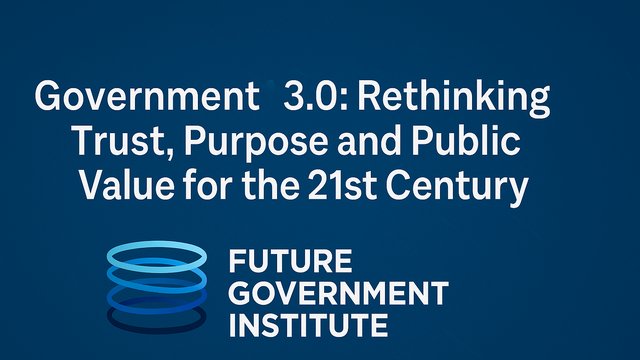


Emergency room (ER) wait times have become a significant issue in Ontario’s healthcare system, with patients often waiting hours or even days of delays before receiving care. While many attribute this problem to a shortage of ER doctors and nurses, the reality is more complex. A ripple effect of inefficiencies throughout the entire hospital system, from regular hospital wards to the intensive care unit (ICU), exacerbates the delays in the emergency department. However, advancements in technology, particularly automation, present opportunities to address these inefficiencies and reduce wait times.
The Chain Reaction: How System Inefficiencies Create ER Backlogs
The delays in ERs often start far from the emergency department itself. According to reports, as of 2024, ER wait times across Ontario have surged. The average ER wait time in the province is now around 20 hours, and some hospitals report even longer delays, such as 25.3 hours at Brampton Civic Hospital (The Pointer).
However, these delays are not solely due to a lack of ER physicians. Hospitals across the province are dealing with a backlog of patients waiting for beds in regular wards or intensive care units (ICUs). As a result, patients who require admission to the hospital from the ER often cannot be moved to a bed because the wards and ICUs are full. For example, in August 2022, over 883 patients across Ontario's hospitals were stuck waiting for beds in wards, contributing to a 53% increase in overall ER delays (Global News).
Where Does the Problem Start?
The delays in the ER are often triggered by inefficiencies in hospital operations, particularly in patient discharge and bed turnover. Inpatient doctors conducting their rounds may face delays in discharging patients, often due to administrative tasks like completing charts, coordinating with specialists, or waiting for test results. These small inefficiencies add up and can lead to substantial delays in freeing up beds. Once patients are finally discharged, the time it takes to prepare and clean the room for a new patient adds further delays.
This issue becomes even more pressing in ICU settings, where the availability of beds is crucial for both emergency and critical care. ICU beds often have longer turnover times due to the complexity of patient care and the need for specialized staff. As a result, patients in the ER who need intensive care may spend hours, or even days, waiting for an ICU bed to become available. In fact, 9 out of 10 ER patients admitted to the hospital spent up to 48 hours in the ER before being transferred to a regular ward or ICU (CIHI).
The Role of Automation in Easing Admin Burdens
Automation can play a significant role in reducing these delays. A large portion of the bottleneck is due to administrative tasks that take time away from direct patient care. For instance, doctors spend 5 to 10 hours per week in unpaid overtime just to complete charting and administrative duties. By automating repetitive tasks, hospitals can free up physicians and nurses to focus on patient care rather than paperwork.
- Automating Charting and Documentation: One of the largest time sinks in any hospital is the process of charting patient information. Medical professionals must input extensive data manually, from patient vitals to treatment notes. AI-powered tools, like speech-to-text applications or automated charting systems, can help streamline this process. Speech and document automation tools are already helping healthcare professionals automate the conversion of spoken notes into accurate medical records. By implementing such tools, doctors can reduce the time spent on charting, freeing them up for more critical tasks, such as discharging patients faster and increasing bed turnover.
- Streamlining Discharge Processes: Another area ripe for automation is the discharge process. Much of the delay in discharging patients is due to the time-consuming nature of coordinating care post-discharge, whether arranging follow-up appointments, providing discharge summaries, or managing prescriptions. Automated systems that manage these workflows can drastically reduce the time needed for discharge. For example, automated reminders, prescription generation, and digital discharge forms can help smooth the process, cutting hours from the administrative side of patient care.
- Reducing ER Overcrowding by Managing Capacity: Inpatient rooms and ICUs also contribute to the backlog. Hospitals could use AI-driven systems to monitor bed availability in real-time, predicting when beds will become available and managing patient flow more effectively. This would prevent the kind of bottlenecks that keep ER patients waiting for beds to open up. Predictive analytics can also help hospitals allocate resources more effectively, anticipating when spikes in ER visits will happen and ensuring that enough staff and space are available.
Paramedic Offload Delays: Another Symptom of the Ripple Effect
Another symptom of ER overcrowding is the long wait paramedics experience when trying to offload patients. Paramedics are required to stay with their patients until a nurse can formally take over, a process known as “offloading.” Due to the delays in the ER, paramedics are often left waiting for extended periods. In Toronto hospitals, paramedics experience average offload delays of 31 minutes, with some reporting wait times exceeding an hour (Global News). This ties up ambulances and prevents them from responding to other emergencies.
Automating parts of the triage and intake process could help reduce offload delays. For instance, automated systems could begin the triage process by transcribing paramedic dictations and converting them into reports that the paramedic can review before arriving at the hospital, so nurses have immediate access to the patient’s medical history, vitals, and initial assessment. This would allow paramedics to offload patients more quickly and return to the road
Burnout and Staffing Shortages
The inefficiencies throughout the hospital are further exacerbated by chronic staff shortages, particularly among nurses. In 2022, the Ontario Nurses’ Association (ONA) expressed concern about severe staffing shortages across the province, particularly in emergency departments and ICUs. Nearly 73% of Ontario physicians reported experiencing burnout, and many of these healthcare workers cited administrative burdens, including charting and paperwork, as major contributors to their long hours. Doctors often spend an additional 5 to 10 hours a week in unpaid overtime just to complete their paperwork (CMAJ).
Automation can alleviate some of the burden on healthcare workers by taking over routine tasks like charting, scheduling, and patient monitoring. By doing so, healthcare professionals can focus on direct patient care rather than administrative duties, which will help reduce burnout and improve overall hospital efficiency.
The Bigger Picture: A Need for Systemic Change
The backlog in ERs is symptomatic of a larger issue within Ontario's healthcare system. The chain of delays starts at the operational level in wards, ICUs, and administrative processes and ripples out to the ER. While solutions such as increasing the number of ER physicians and nurses are important, the real impact will come from addressing these system-wide inefficiencies.
The Ontario government has acknowledged the need for faster emergency care and is exploring ways to address these challenges. However, solutions will likely require not just additional staffing but also more efficient operations across all hospital departments.
To reduce ER wait times, hospitals must streamline patient discharge procedures, optimize bed turnover times, and ensure that administrative tasks do not bog down healthcare workers by utilizing automation tools. This will help prevent bottlenecks in the ER and improve patient flow throughout the hospital.
Conclusion
While the shortage of ER doctors and nurses is often highlighted as the main cause of long wait times, the problem extends far beyond the emergency department. It is the accumulation of smaller inefficiencies in hospital operations—from delays in patient discharges to a lack of ICU beds—that creates a domino effect, ultimately affecting the entire healthcare system.
However, automation offers a path forward. By automating routine administrative tasks like charting, discharge coordination, and patient monitoring, hospitals can reduce the burden on healthcare workers, improve patient flow, and ultimately reduce ER wait times.
Investing in automation tools will not only address the current crisis but also future-proof the healthcare system, ensuring that small inefficiencies no longer contribute to larger systemic failures. As Ontario's healthcare system moves forward, embracing automation will be crucial in delivering timely care to those who need it most.
Published by
About our partner

Loom Analytics
Loom Analytics is a leading business automation company that develops enterprise-grade AI technologies. With a focus on security, efficiency, and accuracy, we aim to redefine the way governments leverage AI to serve the public.Since its inception in 2015, Loom Analytics has been at the forefront of providing workflow solutions to solve administrative challenges, including speech-to-text, document automation, and document extraction, for the legal, medical, insurance, and business industries. We are proud to include partnerships with over 40 large transcription companies and thousands of freelance transcriptionists in these sectors across Canada, the US, the UK, and Australia.Our long-term journey with clients has granted us a unique lens into the challenges inherent to transcription operations. To meet these demands, we developed Claudio, our SaaS designed to ease businesses into the realm of transcript automation technology by seamlessly integrating with existing teams and workflows.We’re deeply committed to providing the resources and support required for companies to transition their teams. The augmentation of operating capacity and efficiency is central to our ethos, and we execute this by training the operations team to adopt the technology effectively and continue working with them as partners.
Learn more
































